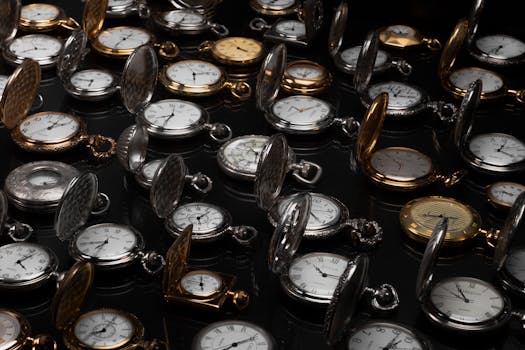Introduction to Watch Movements

Watches are not just functional accessories; they are symbols of craftsmanship and technology. At the heart of every watch lies a movement, the mechanism that powers it. Understanding the types of watch movements can greatly enhance your appreciation of these timepieces. This article explores the main types of movements and their unique characteristics.
Mechanical Movements

Mechanical movements are celebrated for their craftsmanship and precise engineering. Originating from the 16th century, these movements rely on a winding mechanism to power the watch. An intricate system of gears and springs propels the hands, and it is often visible through a transparent case back. Collectors and horology enthusiasts favor mechanical watches for their artistry and the skill set required to produce them.
Automatic Movements

A subset of mechanical movements is the automatic or self-winding movement. This type of movement harnesses the motion of the wearer’s wrist to wind the mainspring automatically. The rotor, a semi-circular piece of metal, spins as the wrist moves, thus charging the watch. This convenient feature eliminates the need to wind the watch manually. Brands like Rolex and Seiko are famous for their high-quality automatic watches that showcase stunning craftsmanship.
Quartz Movements

Quartz movements transformed the watch industry beginning in the late 20th century, facilitating the production of highly accurate and affordable timepieces. Quartz watches use a tiny battery and a quartz crystal to keep precise time. When an electric charge vibrates the crystal, it produces oscillations that help the watch track time with remarkable accuracy. Today, quartz movements dominate the mainstream market due to their reliability and low maintenance costs.
Conclusion: Choosing the Right Movement

When selecting a watch, understanding the movement type can significantly influence your decision. Mechanical movements are ideal for enthusiasts who appreciate tradition and craftsmanship. Automatic watches offer convenience alongside artistry, while quartz watches prioritize functionality and affordability. Ultimately, the choice depends on personal preferences and lifestyle. Regardless of the movement type, each watch weaves a unique tale of timekeeping excellence.
Takeaways

- Mechanical movements emphasize traditional craftsmanship.
- Automatic movements provide convenient self-winding features.
- Quartz movements prioritize accuracy and cost-effectiveness.


